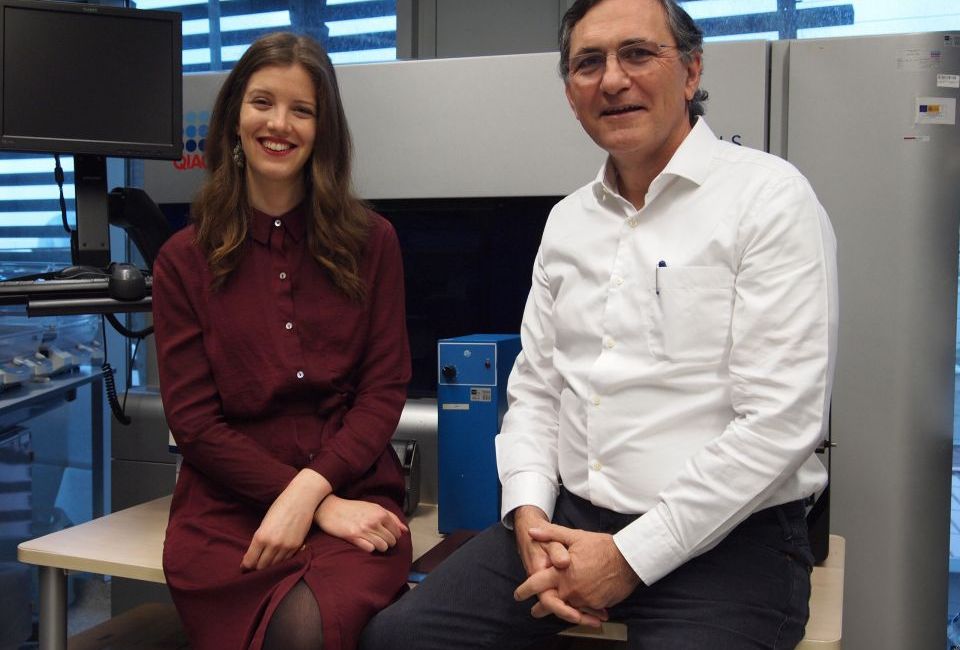
Physical activity modifies how our DNA works, according to a study co-authored by Roberto Elosua
Physical activity is linked to changes in the structure of DNA without changing the sequence of letters in genes, their primary structure, according to a study by the Hospital del Mar Medical Research Institute (IMIM) with the participation of Roberto Elosua, coordinator of the IMIM research group and a lecturer at the Faculty of Medicine of UVic-UCC. The benefits are maximised if the physical activity is moderate to vigorous, in other words walking at a fast pace or doing some sport for at least 30 minutes every day. Changes in DNA act on one of the key elements in the metabolism of triglycerides, which increase the risk of cardiovascular disease at high concentrations. They also influence how our genes are read and their level of expression.
The groups working on the study Physical Activity and Genome-wide DNA Methylation: The REGICOR Study, published in the journal Medicine and Science in Sports and Exercise, were the Epidemiology and Cardiovascular Genetics Group at the IMIM, the Biomedical Research Networking Center on Cardiovascular Diseases (CIBERCV), the Biomedical Research Center Network of Epidemiology and Public Health (CIBERESP), the Centro de Investigación Biomèdica en Red Cáncer (CIBERONC), the Josep Carreras Research Institute and the Faculty of Medicine at UViC-UCC. Roberto Elosua, coordinator of the IMIM research group and an author of the study, says that "we know that lifestyle has an impact on how the information in our genes is expressed, and we wondered whether physical activity would be related to any changes in one of these biological mechanisms: DNA methylation."
The importance of DNA methylation
DNA methylation is a chemical change in the DNA molecule which does not alter the sequence of letters that determines the level of the genes' expression, i.e. their ability or otherwise to generate proteins. The level of DNA methylation has been linked to various diseases including cancer, cardiovascular disease, diabetes, and obesity.
"In our analyses, we observed that people who engage in more moderate-vigorous physical activity have lower levels of methylation at two places in their DNA," says researcher Alba Fernández Sanlés, one of the lead authors of the study. In fact, this type of activity is recommended to the general population as a measure for good health, and it is where the greatest benefit is obtained, according to the study. Methylation is a mechanism that regulates the ability of genes to express themselves, or in other words, whether they produce proteins or not.
Alba Fernández Sanlés says that "one of the genes that we found with changes in its methylation marks is related to triglyceride metabolism. We know that physical activity reduces its levels, so our data suggest that methylation of this DNA site could be a mediating mechanism for how physical activity affects them." The researchers analysed data from two western populations, one from Catalonia RECIGOR group (the Girona COR Register) and the other from the United States (the Framingham Offspring Study).
They were able to work with the data for physical activity of a total of 2,544 people between the ages of 35 and 74, using questionnaires validated by the international scientific community. Their DNA methylation was studied using blood samples from the volunteers, and more than 400,000 DNA markers for each of these individuals were analysed.
The researchers believe that lifestyle affects our DNA methylation, and that these changes may be associated with an increased risk of cardiovascular disease. "Previous studies have also shown that smoking alters DNA methylation levels," says Dr Elosua, who highlights "the importance of promoting a healthy lifestyle that includes physical activity in preventing cardiovascular diseases." The project was funded with grants from the Government of Catalonia and the Carlos III Health Institute.
Photo: Alba Fernández Sanlés and Roberto Elosua